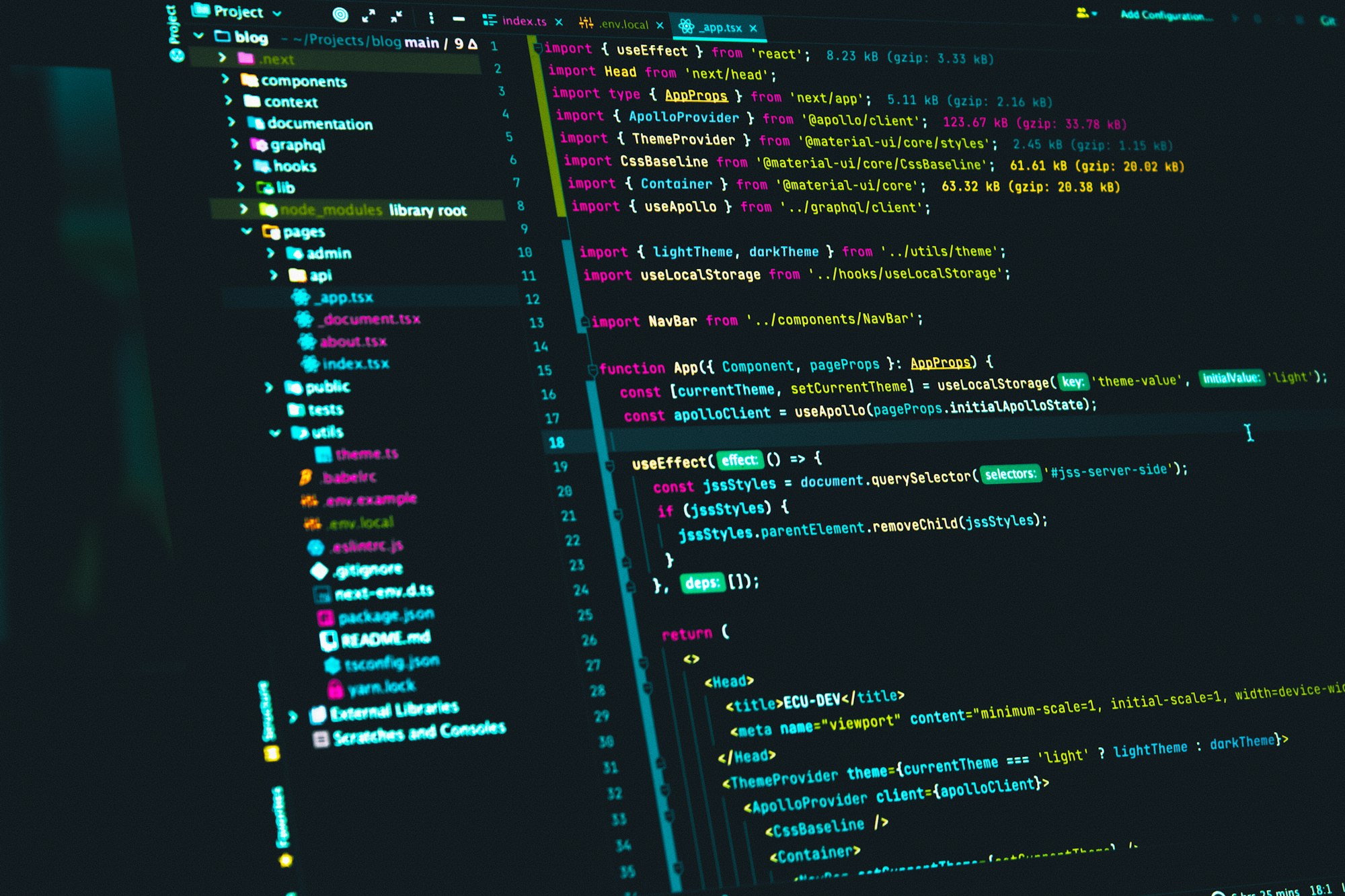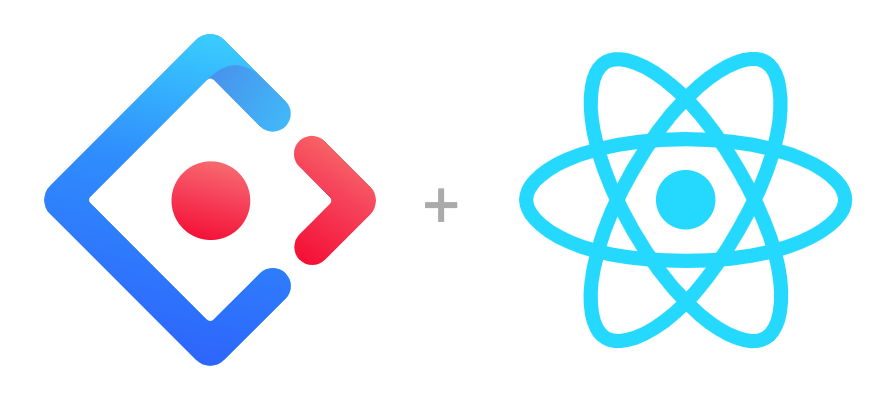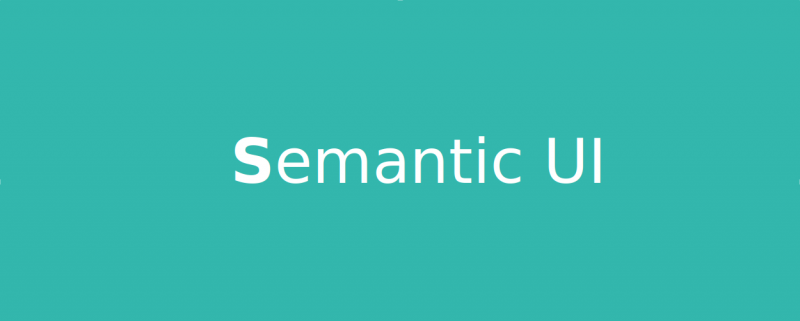Top 10 ReactJS UI Libraries
Let's look at 10 Awesome libraries that will help you build great user interfaces for your users.

ReactJS is a popular JavaScript library for building user interfaces, and it has gained widespread adoption among front-end developers for its simplicity, flexibility, and performance. When working with ReactJS, developers often use UI libraries to speed up development and improve the user experience of their applications.
UI libraries provide a set of pre-built, customizable components that can be easily integrated into a ReactJS application. These components include buttons, forms, tables, menus, and more. By using a UI library, developers can save time and effort by not having to build these components from scratch. They can also benefit from the library's design and functionality.
In this article, we will review the top 10 UI libraries for ReactJS based on their popularity, features, and overall usefulness for building user interfaces.
Material-UI

Material-UI is a popular UI library for ReactJS based on Google's Material Design guidelines. It offers a wide range of pre-built, customizable components designed to look and feel like native applications on different platforms, such as Android, iOS, and the web. Using Material-UI, developers can save time and effort by not building these components from scratch. They can also benefit from the design and functionality that the library offers.
Material-UI is a UI library that provides a set of components easily integrated into a ReactJS application. These components include buttons, forms, tables, menus, and more. UI libraries are helpful because they allow developers to quickly and easily build user interfaces without starting from scratch.
Material-UI was first released in 2014 and has become one of the most widely-used UI libraries for ReactJS. It is actively maintained and has a large community of users and contributors.
Getting Started with Material UI & React
To start with Material-UI, you must install it in your ReactJS project. You can do this using npm, the package manager for JavaScript:
npm install @material-ui/core
Once you have installed Material-UI, you can start using its components in your ReactJS application. Here is an example of how to use the Button component:
import { Button } from '@material-ui/core';
function App() {
return <Button variant="contained" color="primary">Click me!</Button>;
}
Material-UI provides many components, including buttons, forms, tables, menus, and more. Here are some examples of other components that are available in Material-UI:
- TextField: A form control for inputting text.
import { TextField } from '@material-ui/core';
function App() {
return <TextField label="Enter your name" />;
}
- Table: A component for displaying data in a tabular format.
import { Table, TableBody, TableCell, TableHead, TableRow } from '@material-ui/core';
function App() {
const rows = [
{ name: 'Alice', age: 25 },
{ name: 'Bob', age: 30 },
{ name: 'Charlie', age: 35 },
];
return (
<Table>
<TableHead>
<TableRow>
<TableCell>Name</TableCell>
<TableCell>Age</TableCell>
</TableRow>
</TableHead>
<TableBody>
{rows.map(row => (
<TableRow key={row.name}>
<TableCell>{row.name}</TableCell>
<TableCell>{row.age}</TableCell>
</TableRow>
))}
</TableBody>
</Table>
);
}
Material-UI is highly customizable, with numerous customization options and themes available. You can customize the look and feel of your application by using the theme system in Material-UI. Here is an example of how to customize the primary colour of your application:
import { createMuiTheme, ThemeProvider } from '@material-ui/core';
const theme = createMuiTheme({
palette: {
primary: {
main: '#ff4400',
},
},
});
function App() {
return (
<ThemeProvider theme={theme}>
<Button variant="contained" color="primary">Click me!</Button>
</ThemeProvider>
);
}In addition to customizing the look and feel of your application, you can also customize the functionality of Material-UI components. For example, you can override a component's styles or add your own props to a component. Here is an example of how to override the techniques of the Button component:
import { withStyles, Button } from '@material-ui/core';
const StyledButton = withStyles({
root: {
background: 'linear-gradient(45deg, #FE6B8B 30%, #FF8E53 90%)',
borderRadius: 3,
border: 0,
color: 'white',
height: 48,
padding: '0 30px',
boxShadow: '0 3px 5px 2px rgba(255, 105, 135, .3)',
},
})(Button);
function App() {
return <StyledButton>Click me!</StyledButton>;
}When using Material-UI, it's essential to follow some best practices to ensure that your application is efficient, easy to maintain, and user-friendly. Some tips for using Material-UI effectively include:
- Use the theme system to customize the look and feel of your application.
- Use the customization options and props available on each component to tailor its functionality to your needs.
- Follow the Material Design guidelines to ensure that your application looks and feels consistent and professional.
- Avoid using too many different components or customization options, as this can make your application difficult to maintain and understand.
To avoid common pitfalls when using Material-UI, be sure to:
- Use the latest version of Material-UI to ensure that you have access to the latest features and bug fixes.
- Test your application on different devices and browsers to ensure it looks and works as expected.
- Pay attention to performance and memory usage, especially when using complex or data-heavy components.
- Make sure to read the documentation and examples provided by Material-UI to get a better understanding of how to use the library effectively.
In conclusion, Material-UI is a powerful and widely-used UI library for ReactJS that allows developers to build professional-looking and functional applications quickly. It offers a wide range of pre-built components, a robust theme system, and numerous customization options, making it easy to tailor the look and feel of your application to your needs. Following some best practices and avoiding common pitfalls, you can use Material-UI effectively in your ReactJS projects.
Ant Design
Ant Design is a comprehensive UI library developed by Alibaba Group, one of the largest e-commerce companies in the world. It includes a wide range of components optimized for building enterprise-level applications. It also has a robust design system that provides typography, layout, colour, and more guidelines. Ant Design is well-documented and has a large community of users and contributors.

First released in 2015, it has become one of the most widely-used UI libraries for ReactJS. It is actively maintained and has a large community of users and contributors.
Benefits of Ant Design
- Design guidelines: Ant Design is based on the Ant Design principles, a set of guidelines that outline how to design user interfaces in a consistent and user-friendly way. These principles include using a clear hierarchy, appropriate use of colour and typography, and providing user feedback. By following these principles, developers can create user interfaces that are easy to use, visually appealing, and professional.
- Pre-built components: Ant Design includes a wide range of pre-built components that are easy to use and highly customizable. These components include buttons, forms, tables, menus, and more. By using these components, developers can save time and effort by not having to build these components from scratch. They can also benefit from the design and functionality that the library offers.
- Customization options: Ant Design is highly customizable, with numerous customization options and themes available. Developers can customize the look and feel of their application by using the theme system in Ant Design, which includes a wide range of customization options, including the ability to change colours, fonts, and more.
- Robust documentation: Ant Design has comprehensive and well-written documentation that includes detailed information about each component and examples of how to use said components in a ReactJS application. This makes it easy for developers to get started with Ant Design and learn how to use the library effectively.
To conclude, Ant design has a wide variety of enterprise-level components that can help you start and build complex applications with React very fast. Furthermore, there are many tutorials and content online to help you get started with Ant design.
Getting Started With Ant Design and React
To set up Ant Design with a React application, you will need first install the Ant Design package: The first step is to install the Ant Design package in your React application. You can do this by running the following command in your terminal:
yarn add antd
You will need to import the Ant Design styles into your application to use the Ant Design components. You can do this by adding the following line to your application's main stylesheet or by importing it to the root of your react application:
@import '~antd/dist/antd.css';
Now that you have installed the Ant Design package and imported the styles, you can start using the Ant Design components in your application. To use a component, you can import it from the antd package and then render it in your JSX code. For example:
import { Button } from 'antd';
function MyComponent() {
return <Button>Click me</Button>;
}Note: If you want to customize the theme of your Ant Design components, you can use the ThemeProvider component from the styled-components package to wrap your application and provide custom theme values. You can find more information about customizing the theme in the Ant Design documentation.
Semantic-UI-React
Semantic-UI-React is a UI library based on the Semantic UI framework, designed to be intuitive and easy to use. It includes various components designed to be responsive and work well on different devices. Semantic-UI-React is highly customizable and includes numerous customization options and themes. It is also well-documented and has a large community of users and contributors.

Benefits of Semantic-UI-React
Simplicity: Semantic UI is designed to be easy to use, with a simple and intuitive interface that allows developers to quickly build user interfaces without spending a lot of time planning and implementing each component from scratch.
Responsive design: Semantic UI is designed to be responsive, meaning that it automatically adjusts to the size and orientation of the device it is being displayed on. This makes building applications that look good on desktop, and mobile devices accessible.
Customization: Semantic UI provides various customization options, including colours, fonts, and sizes, so that developers can create a unique and consistent look for their applications.
Accessibility: Semantic UI is designed to be accessible, making it easy for users with disabilities. It meets industry standards for accessibility and has been tested to ensure that it is usable by users with visual, mobility, and other disabilities.
Performance: Semantic UI is optimized for performance and is fast and efficient. It uses minimal resources and has a small footprint, making it easy to use in applications of any size.
Getting Started With Ant Design and React
To start with Semantic UI and React, you must install Semantic UI using either npm or yarn. In this example, we will use yarn.
yarn add semantic-ui-react
Next, you will need to add the CSS import to your root file in your react project. Usually, this is either index.js or app.js by including the following line.
import 'semantic-ui-css/semantic.min.css';
You can now use any of the Semantic UI React components in your React components. For example, to use a Button component, you would import it like this:
import { Button } from 'semantic-ui-react';
Blueprint
Blueprint is a UI library that is fast, flexible, and easy to use. It includes a wide range of components that are optimized for building data-heavy applications. It also has a robust design system that provides typography, layout, colour, and more guidelines. Blueprint is highly customizable, with numerous customization options and themes available. It is also well-documented and has a large community of users and contributors.
Some examples of how Blueprint can be used in a ReactJS application include:
Reactstrap
Reactstrap is a UI library based on the Bootstrap framework, one of the most popular front-end frameworks for building responsive, mobile-first websites. It includes many components designed to work well with ReactJS and is easy to use and customize. Reactstrap is well-documented and has a large community of users and contributors.
Some examples of how Reactstrap can be used in a ReactJS application include:
React-Bootstrap
React-Bootstrap is a UI library based on the Bootstrap framework and explicitly designed for use with ReactJS. It includes many components optimized for building responsive, mobile-first applications and is easy to use and customize. React-Bootstrap is well-documented and has a large community of users and contributors.
Some examples of how React-Bootstrap can be used in a ReactJS application include:
Grommet
Grommet is a UI library that is flexible, scalable, and easy to use. It includes a wide range of components optimized for building responsive, mobile-first applications, and it has a robust design system that provides guidelines for typography, layout, colour, and more. Grommet is highly customizable, with numerous customization options and themes available. It is also well-documented and has a large community of users and contributors.
Some examples of how Grommet can be used in a ReactJS application include:
React-Virtualized
React-Virtualized is a UI library designed to build efficient, large-scale applications with complex, data-heavy interfaces. It includes a wide range of components optimized for rendering large lists and tables and is designed to minimize the impact on performance and memory usage. React-Virtualized is well-documented and has a large community of users and contributors.
React-MD
React-MD is a UI library designed to be fast, lightweight, and easy to use. It includes many components optimized for building responsive, mobile-first applications and has a clean, modern design. React-MD is highly customizable, with numerous customization options and themes available. It is also well-documented and has a large community of users and contributors.
Some examples of how React-MD can be used in a ReactJS application include:
React-Toolbox
React Toolbox is a UI library that is customizable, scalable, and easy to use. It includes many components optimized for building responsive, mobile-first applications and has a clean, modern design. React-Toolbox is highly customizable, with numerous customization options and themes available. It is also well-documented and has a large community of users and contributors.
